Panasonic Lumix DMC-LX3

Ordered from Hong Kong on Tuesday (28 September 2010) and sent out on the following day and finally arrived in Shewsbury Land on Saturday (2 October 2010) and so now here we are with this wonderful camera which regarded as "brilliant classic" by others and eventually it is my dream camera since 2008 when Panasonic first launched this model to the mass market.
I've been holding back on this camera for over a year now as price is one of the key issue. At roughly between SGD 650 to SGD 700 - this camera is not cheap. I think the price could have been much higher when Panasonic just released this model 2 years ago. However, thanks to the arrival of the new Panasonic LX5, a similar advance compact type of camera boasting incremental updates and upgrades from this LX3, the price of the LX3 now slowly dropping a bit but not as fast as one would hope for - that is a testament that this is indeed a very good camera and surely a popular one.
Back then in 2008, I have my first digicam, Panasonic LZ7 and I'm quite happy with it and slowly before I knew it, I suddenly become more interested with this photography stuff and I upgrade to the wonderful superzoom Panasonic FZ28 and from there onwards, keep on changing cameras and this is now the LX3 - I believe after this, I wont buy any other camera anymore for as long as both my long zoom Fujifilm HS10 and this Panasonic LX3 can operate properly as they are now.
This is the review of Panasonic Lumix DMC-LX3 which received lots of positive reviews and praise from many expert reviewer/photographer of several well known photography/camera/gadgets review related websites.
If you want to see the full spec, go to this link = http://www.dpreview.com/reviews/panasonicdmclx3/
The box...


Out of the box, you will get all these stuff... the camera, charger, battery, USB cable, neck strap, software CD and the user manual book....
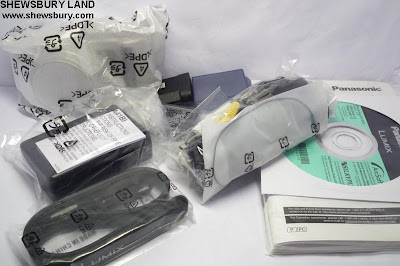
Let's have a look at the LX3 now....









Nowadays I seems to like the 3:2 Aspect Ratio... not sure why... I just happen to like it... nonetheless it's easy to change the Aspect Ration on this LX3 with this slider.

Another slider here is for you to select the Focus type - Auto Focus, Auto Focus Macro and Manual Focus..... I personally always prefer to just use the Auto Focus... once a while I will play around with the Manual Focus for fun sake but it is not a features that I will use in majority of my photo shooting... after all, the Auto Focus is much easier and faster - just let the camera do the thinking for you.... but for those hardcore people who have plenty of time to do Manual Focus, the option is here....

This camera is called "Advance Compact" type because you can either use the full manual control (usually for the experience photographer) or you can let the camera do the thinking and everything for you by choosing the "Intelligent Auto" or i-"Auto" - basically its an "all automatic mode" just like the one you can found from many other camera.

These are the other buttons that you need to use/operate this camera accordingly including a "joystick" which is importan for "Manual mode" operation or the other advance mode (P,A,S,M) - usually to adjust Aperture, Shutter Speed and also for Manual focusing.

1 thing I like about the Fujifilm HS10 is that it has many buttons and thus changing those important photography settings are much easier - feel like handling a DSLR camera. My experience with Panasonic FZ28 however made me aware that on this LX3, most of those options and settings are hidden inside the "menu" so I really have to dig inside to see the everything available offered by this camera.
Thankfully though, Panasonic give this option to customize 1 of the navigation buttons. The "Down" selection button can be customized to suit your needs and I decided to use this button for ISO selection as for me personally, that is 1 of the most important part needed for shooting and from time to time I tend to switch to several ISO settings in accordance to the situation.
There 2 things that that I dislike about the LX3.
One of them is that the slider button to choose Record and Playback mode is kind of a little stiff... need some extra force my finger to slide it up and down. The good thing maybe is that you wont accidentally slide it to the wrong mode but it's not a big deal after all. This could also because the camera is still new so maybe after several hundreds times of sliding it up and down maybe, just maybe, it will be a little soft.... time will tell...
The other is also in a way related to the above, where you have to make sure that the slider selection in on the "Recording mode" before you can began your next shooting. With the Fujifilm HS10, while viewing your photos or video in the Playback mode, by just pressing the shutter button, the camera will automatically go into the shooting mode (or recording mode). With the LX3, I have to make sure that I have selected the correct mode accordingly - again not really a deal breaker, just something that I personally dislike but I guess I will get used to it after using this camera for a long time.... maybe...
I also believe that probably the designer have a good reason and explanation about such design mechanism. As I said, it's not a deal breaker.
Here on the left is the internal flash of the LX3 and on the middle is the hot-shoe for you to attached external flash unit...

On the side here are all the output options - USB, HDMI, TV...

The battery and SD card compartment - you can see from the label there - Made in Japan.... yeah, most of Panasonic high end digicam are still made in Panasonic home - Osaka, Japan. However, the budget models are now produced in their factory in China. This is in fact normal nowadays as it's expensive to produce something in Japan now so most of the Japanese manufacturer slowly shifting their production house to China as the cost is lower and with this they can afford to offer competitive price for their products.

The magnificent Leica DC Vario Summicron lens with big aperture of F/2.0 at Wide Angle (24mm) and an impressive F/2.8 at maximum Telephoto end (60mm) - this what separate LX3 and the other normal compact digicam in the market then and maybe also now...

We bought this LX3 at dealer's price which is cheap if compared to the current local retail price of SGD 710.00 and in addition, we get a free spare battery (3rd party model) and camera cleaning kit.
There is no SD card supplied so we have to buy separately, we choose this Class 4 SDHC Card from Kingston with 4GB capacity - the current price is SGD 16.00

Talking about external flash, we happen to have the cheap Yong Nuo Speed Lite YN-460, with a relatively low trigger voltage of 3.3V and thus it is safe to use with the LX3.
For your information, the maximum limit of trigger voltage for the LX3 is only 15V - so if you plan to use the external flash, the most important part is to make sure that the maximum trigger voltage does not exceed 15V as this may damaged your camera.

LX3 and the Yong Nuo Speed Lite YN-460 full manual flash. You can read read the full review about this external flash in here = http://speedlights.net/2010/03/16/yongnuo-460-yn460-v1-for-strobist-use/
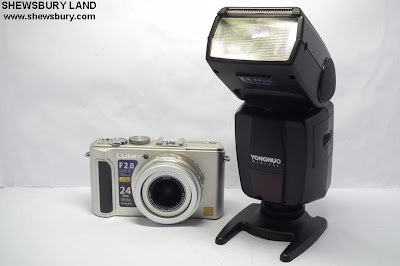
For those who don't know, the full manual flash means that there is no "TTL" - this means that what ever setting you do on your camera, it wont affect the flash, you need to set the flash output power level manually on the flash control panel. Frankly speaking, in my opinion it's more fun and easier to use this manual thing than to use those advance external flash with all the "blings" that comes with it.... well, the good thing for me is that I can decide the flash power in accordance to my will and not in accordance to what the camera think - this means more room for self-tweaking and creativity.... something like that...

I often used this external flash on my Fujifilm HS10 usually for indoor people photo and my insects macr0 photography but with the Fujifilm HS10, the flash only work on the advance mode - P,A,S,M - in fact I just use it with the Manual mode as I hardly use the P (Program), A (Aperture priority) and S (Shutter priority)....
However, it's kind of funny when I attached this external flash onto the LX3 because of the size. In fact, the moment I attached the external flash, my left hand tend to hold the flash unit (as balancing act) while my right hand will be busy operating the camera....


While this external flash only works in the P,A,S,M mode with my Fujifilm HS10 - it is surprising however that with the LX3, the external flash also work perfectly in the Automatic mode (i-Auto) as well which is a surprise for me.... I'm all but happy though.... and since it works with the "i-Auto" mode, it is safe for me to assume that the external flash works with the other custom preset modes of the LX3.... I haven't try but I believe so....
Well... OK then... now it's time for some sample photos....
All these photos were downsized to 1074 x 768 for easy uploading purpose - I don't mind to upload full 10MP resolution photos with 3MB to 4MB in size but the internet connection in here is "so great" that I will end up waiting for a long time and thus I say... forget it...
Manual - F/7.1 - 1/800 - ISO 100

Indoor people photo - this one is using Automatic mode....

Same as above, using Automatic mode....

Manual - F/7.1 - 1/800 - ISO 100 (Wide Angle 24mm)

Manual - F/7.1 - 1/800 - ISO 100 (maximum Telephoto 2.5x zoom - 60mm)
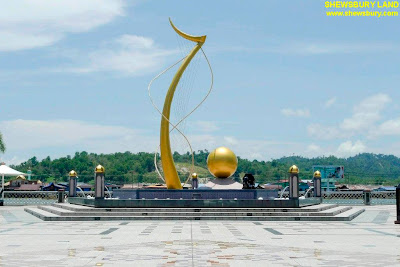
Manual - F/7.1 - 1/320 - ISO 100

Manual - F/8.0 - 1/400 - ISO 100

Manual - F/8.0 - 1/400 - ISO 100

Manual - F/6.3 - 1/400 - ISO 100 (WA 24mm)

Manual - F/6.3 - 1/500 - ISO 100 (TP 60mm)

Manual - F/6.3 - 1/500 - ISO 100 (WA 24mm)

Manual - F/6.3 - 1/500 - ISO 100 (TP 60mm)

Manual - F/6.3 - 1/125 - ISO 100

Manual - F/6.3 - 1/500 - ISO 100

Manual - F/6.3 - 1/500 - ISO 100

I haven't got the grip on this LX3 capability on close-up and macro, this flower shot is using Automatic mode....

After a little more practice, I seems to be able to understand a little bit of it.... and thus the following shots is now in full Manual mode...
This is now the time to unleash the big aperture lens power of LX3 - using those big aperture for indoor macro shoot is fun....
Manual - F/2.1 - 1/10 - ISO 400

Manual - F/2.6 - 1/6 - ISO 400

Manual - F/2.0 - 1/5 - ISO 200

Now the following are basically just some ISO testing.... the source of light on our living room is just the normal fluorescent lamp which is not that great....
Manual - F/2.0 - 1/4 - ISO 100

Manual - F/2.0 - 1/8 - ISO 200

Manual - F/2.0 - 1/13 - ISO 400

Manual - F/2.0 - 1/30 - ISO 800

Manual - F/2.0 - 1/60 - ISO 1600

And now another test on a slightly darker area, the lower level of our display shelf.... less light there and almost dark for photography...
Manual - F/2.0 - 1/5 - ISO 800

Manual - F/2.0 - 1/10 - ISO 1600

From the several shoots of ISO testing above you can basically understand that on bright light situation (like outdoor under the lovely sun light) you just use the small ISO (usually ISO 100, but on the LX3 you can go further to ISO 80) but indoor or in low light situation (or even in the dark) you will need to use the bigger ISO (ISO 400, ISO 800, ISO 1600 etc.)
On DSLR, specially those high end models.... the image quality is usually still great even at high ISO 800 or ISO 1,600 and maybe some super expensive models designed for pro or rich consumer, you can go all the way up to several thousands ISO maybe... this is because those DSLR have bigger sensor size and all the other technology and unique mechanism.
For normal compact digicam however, the image quality tend to fall on the higher ISO settings due to the smaller image sensor inside them..
See the sensor size comparison below;

All credits goes to : www.imaging-resource.com
The sensor size of our Fujifilm HS10 is the tiny 1/2.5" while this Panasonic LX3 use a slightly bigger sensor of 1/1.7" but if compared to those DSLR sensor size of Canon (for example), the 1/1.7" is still relatively small.
Basically, the image quality of this Panasonic LX3 is brilliant - way much better than the Fujifilm HS10. However, it is difficult to just compare the LX3 and the Fujifilm HS10 side by side directly because the sensor size (and also the sensor type) are different and while the LX3 only have 2.5x zoom the Fujifilm HS10 can provide 30x zoom power and many other exciting features as well.
I'm not a pixel peeper nor do I have the technical knowledge or resource to explain about the in-depth image quality analysis but from the ISO testing above, at ISO 800 and ISO 1600 you can see that the image quality is not great but the image is still acceptable - I don't bother to do at test on ISO 3,200 as I can guess the outcome already.
As a tribute to Panasonic for producing such a great camera... I guess it's a must to take out this 1/43 scale Panasonic Toyota Racing F1 car..... I have bigger 1/18 scale but kind of lazy to take it out from the box....





And lastly, just another look at the zoom capabilities of the LX3 - 2.5x zoom from 24mm to 60mm - my Fujifilm HS10 will laugh at the LX3 zoom power.... The scenes below are from the Chinese opera show currently going on in the temple since the MoonCake Festival 2010.
Manual - F/2.0 - 1/50 - ISO 400 - (WA 24mm)

Manual - F/2 .8 - 1/125 - ISO 400 - (maximum Telephoto 60mm)



There are still a few things that I want to experiment with this LX3 and soon I want to use the 52mm filters with the help of Adapter Tube. Once I get that, I can then try to do more and more experiments - mostly on Macro related. Look forward to it...


Overall, the LX3 is one hell of a camera - for both novice and experience photographer - this LX3 is surely an exciting camera to use. The strange optical zoom power of 2.5x (from 24mm to 60mm) might be limited to some people as usually most compact digicam will offer 3x or4x optical zoom power. According to Panasonic, the reason is so that the LX3 can maintained the usage of big Aperture and the image quality. Eventually you can still get a little bit more of optical zoom power with the LX3 if you lower down the image resolution to 6MP or 4MP.
The camera is solidly build and you can feel the weight of it and it doesn't feel cheap surely. Certainly something that you could expect since it was made in Panasonic own backyard in Osaka, Japan.
I would personally use this camera mostly for indoor portrait photography and once a while some figure/toys photography and maybe once in a blue moon of insects/macro and nature photography.
I'm not sure if I can recommend this camera to everybody because just like any other camera, the LX3 have lots of positive and negative points and depending on the individual knowledge and expertise in photography, the negative points can be just a minor complains or a long list of demands for this and that which could end up with disappointment.
Another factor that need to be taken into account is the price tag - this is not a cheap camera - but if you fully understand what this camera can do for you - then I guess you can swallow the price and be happy with it.
If you are uncertain - then, just grab a simple point and shoot camera with decent price that match your budget and hopefully you can be happy with it. I always believe that in many cases, those cheap point and shoot camera is already good enough for majority of people - not everybody want an "advance" camera as not everybody can afford it anyway.
Chubby said, with great passion, come great spending - my version is; with lot's of desire, there will be lots of sex.... LOL
end
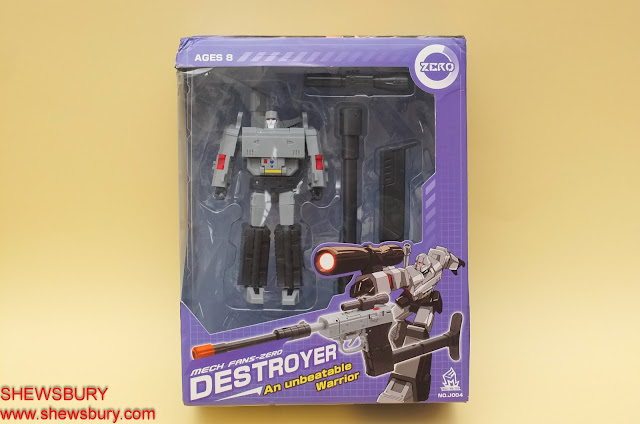
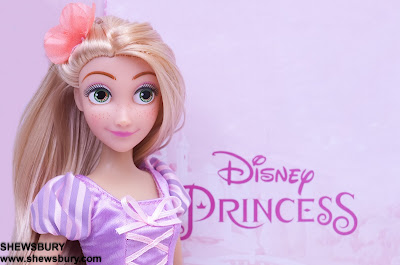
gr8 stuffs John! compact and powerful!
ReplyDeleteSmall yet amazing feature set, that camera.
ReplyDeleteBut with flash unit that you've added, it does looked rather... awkward...
Something akin to... an SD Gundam? XD
*runs*
Finally Lumix LX-3 :D
ReplyDeleteyeah it's expensive but lately the price drop right after LX-5 released ??
bro, what do you think about Olympus PEN? I think I just shift my target...
ReplyDeleteSyful, the good thing about that Olympus PEN is that Olympus and Panasonic jointly developed the Micro 4/3 system and that means you can also use the lens from Panasonic Micro 4/3 system.
ReplyDeleteI don't mind to buy either the Olympus PEN or the Panasonic GF1 (but I think I have tendency to go for Panasonic hehehe) but currently the price still not ideal for my budget... I rather wait for next year and hopefully the price will go down then...hopefully...
However, if you can afford it then, why not... go ahead with it...it's fun to use small camera with the ability to change lens (if you have the extra lens).
If you like a compact camera with the option to change lens (and more spending), buy the Olympus PEN.
If you want a slightly cheaper option but with slightly bigger size and weight, you can stick with the Nikon D3000 that you've been targeting now (though the probability of spending on extra lens and accessories in the future is still there) ...
If you want a "multi purpose" camera, I would suggest the magnificent Panasonic FZ35 hehehe...
But at the end, its your money, your decision...
Aya, yeah the price doesn't move much before the arrival of the LX5 but since now LX5 already appear in the market, the price fall down a little bit...
ReplyDeleteBD77, agree with you - the LX3 sure looks weird with such big flash unit - I saw many people look at me handling the LX3 with such big flash and surely they might feel it's weird (or maybe they admiring the LX3 - LOL)... in fact there is a smaller size of flash unit from Panasonic or other brand and surely they will look just nice to mixed and matched with the LX3 - unfortunately, I still have to buy them and I don't want to spend on new flash unit yet as I feel comfortable with the Full Manual flash of YN-460.
ReplyDeleteAlan MCTS, thanks and yes this camera is a joy to use... I look forward for your next camera.... I guess it will be DSLR from Canon...
ReplyDeleteCongrats! Now you can take better toy pictures. :)
ReplyDeleteLOL, Leon, actually even the Fujifilm can do a good job already... I did try to use the LX3 for figure review, at the moment, I feel it's kind of a little difficult as I can't use the extra stuff and zoom that I always use with the Fujifilm HS10... but hopefully once I get the adapter tube for the LX3, maybe I can get more out of it... at the moment I prefer to use the LX3 for indoor people photography....
ReplyDelete